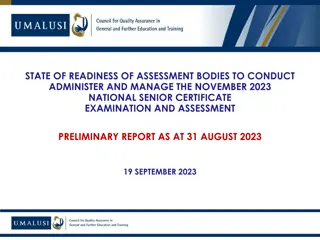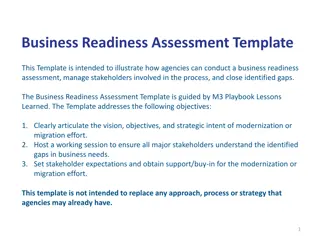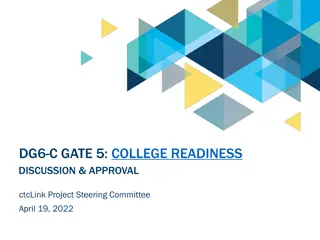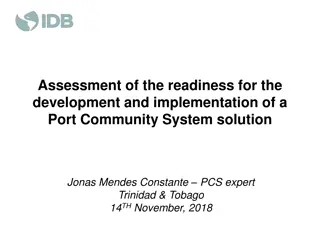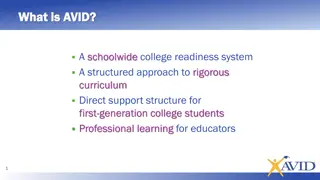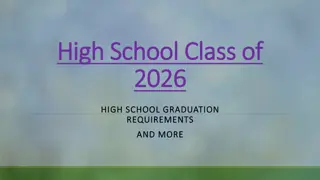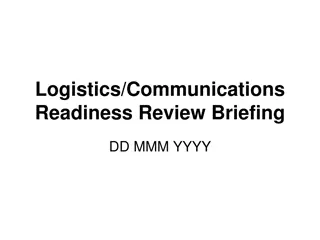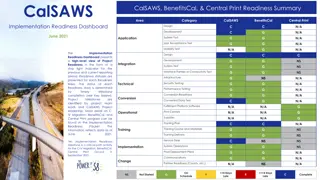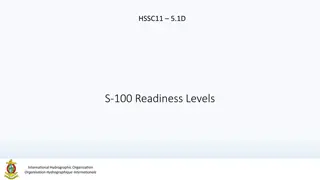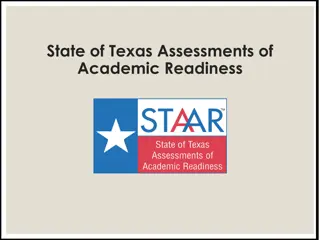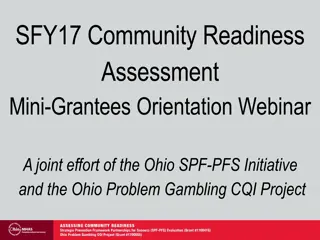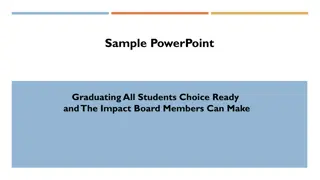Maximizing Learning Readiness for Students: Strategies and Tips
Explore the importance of learning readiness and strategies to enhance students' capability to learn, including sensory regulation, handwriting tips, and addressing underdeveloped skills. Learn about the impact of modern factors like technology on children's learning readiness.
- Learning readiness
- Student capability
- Sensory regulation
- Handwriting strategies
- Underdeveloped skills
Download Presentation

Please find below an Image/Link to download the presentation.
The content on the website is provided AS IS for your information and personal use only. It may not be sold, licensed, or shared on other websites without obtaining consent from the author. Download presentation by click this link. If you encounter any issues during the download, it is possible that the publisher has removed the file from their server.
E N D
Presentation Transcript
Learning Readiness: Maximizing Your Students' Capability to Learn + Bonus Writing Tips Augustine Literacy Project Augustine Literacy Project March 9, 2022 March 9, 2022 Heidi Tringali, MS,OTR/L Heidi Tringali, MS,OTR/L Tringali Occupational Therapy Services Tringali Occupational Therapy Services
Overview Why? Ready-Demand-Response What is Learning Readiness? Approach Is there an increase in performance related issues in children today? Sensory 101 1:1 Tutoring Strategies Strategies Handwriting and Pencil Grips Questions
Why is it important to talk about Learning Readiness Ready Demand Response
Cognitively Organized Physically Calm Learning Readiness Socially Connected
A PANDEMIC!! Back to Sleep (1991) 5-point car restraints/seat belts/car seats (1978-85) Contributors to Learning Readiness Issues No Child Left Behind (2002) TV/Computer/Cell phones/Blue Tooth/DVD players/Video Games Over-informed with information from the media, medical community, and pharmaceutical companies Fear
The Result Underdeveloped sensory systems Weak core muscles Weak gross motor skills Weak visual motor skills Underdeveloped social skills Weak fine motor skills Sleep disturbances Difficulty with organization
Sensory Regulation: aka Learning Readiness Organized, calm, connected Vestibular (spinning, swinging, inversion histamine, organizing) Proprioception (heavy work, joint pressure serotonin, calming) Deep pressure (deep pressure throughout the tactile system dopamine, connectedness)
Strategies for Organization/Vestibular Toe Touches Bats and butterflies Inverted wall walk Over/under ball pass Inverted ball push Rolling
Strategies for Calm/Proprioception Bottle Buddies Weighted Vest Weighted Lap Pad Weighted Ball Pressure on shoulders in sitting Carry heavy books/objects Wrist/ankle weights
Strategies for Connectedness Texture Squares Theraputty Squishy ball Velcro dots Pressure Clothes Resistive Tunnel Body Sock
Pencil Grip Tripod/Quadropod Handwriting and Pencil Grip Strategies Pencil Grips Grotto grip Letter formation start, sequence Sitting position 90-90-90 Print v Cursive v Keyboarding Diagnosis Dysgraphia, Disorder of Written Expression
Summary and Questions Heidi Tringali, MS,OTR/L Tringali Occupational Therapy Services heidi@charlotteot.com heiditringali@gmail.com 704.577.4094





